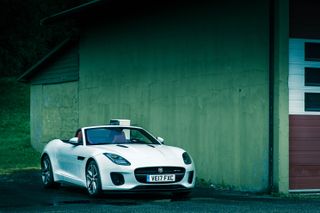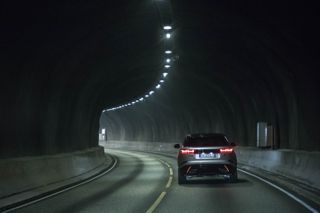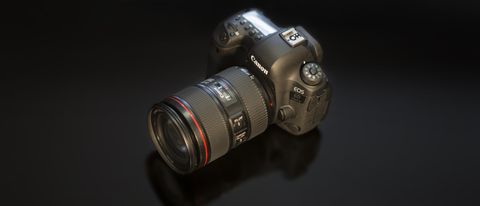Why you can trust TechRadar
Performance
- 6.5fps burst shooting
- Burst depth up to 21 raw frames / 150 JPEGs
- 1,090-shot battery life
It's no surprise to see that Canon has upped the burst rate of the EOS 6D Mark II to 6.5fps, from the 6D's 4.5fps. Not only that but the burst depth has also been improved, with the new camera capable of shooting 21 raw files in succession compared to its predecessor's 17.
Interestingly for those who like to shoot JPEGs, however, the 150-frame burst depth offered by the EOS 6D Mark II is actually quite a drop from the 1,250-shot limit on the EOS 6D, although a 150-frame burst depth is hardly limiting. It’s also interesting to see that Canon hasn't included UHS-II support for the EOS 6D Mark II's single card slot, which might have improved that number, although any benefit would depend on how quickly the camera can deal with the information to begin with.
Either way, this isn’t a camera aimed particularly at sports photographers, and 6.5fps is a very credible burst rate for a full-frame camera at this price point, potentially suiting it to situations where the original EOS 6D may have fallen short.

The 6D Mark II uses the same 7560-pixel RGB+IR metering sensor as the Rebel T7i / 800D, with 63-zone Evaluative, Partial, Centre-weighted and Spot metering options.
As we've found with other Canon DSLRs that use this system, the evaluative system does a sound job most of the time, but it’s worth keeping in mind that the weighting is applied to the active AF point, which can mean you need to use exposure compensation in high-contrast situations; we experienced a couple of occasions where the same shot threw up two different exposures simply because we shifted the AF point slightly.

The EOS 6D Mark II's auto white balance does a very good job. There are actually two auto white balance options: Ambient Priority mode delivers slightly warmer results, helping you retain the overall ambience of the scene, while White Priority can deliver clean, neutral results even under artificial lighting.
Canon has also added the flicker detection option we’ve seen on previous EOS DSLRs, to help maintain consistency when shooting under artificial light sources. This is great news for those shooting indoors, perhaps events or sports, where such lighting is commonly used.
Battery life is very good, with the LP-E6N unit rated for up to 1,200 shots. Over the course of two days of extensive shooting the 6D Mark II's battery status bar hardly budged.
Image quality
- ISO100-40,000, expandable to 50-102,400
- +/-5 EV exposure compensation in 1/3 or 1/2-stop increments
- Disappointing dynamic range
The EOS 6D Mark II is unique at this level in that it features a 26.2MP sensor; 24MP is the norm, so the 6D Mark II has a 2MP edge over its closest rival, the Nikon D750. In reality though, this makes a negligible difference to the amount of extra detail the EOS 6D Mark II can resolve – it's comparable to the D750, allowing you to happily print A3+ images, and even squeeze out large prints if necessary.

Looking at ISO performance and the EOS 6D Mark II puts in a solid, if unremarkable performance. JPEG files appear very clean throughout the ISO range, but when you look at the corresponding raw files, it becomes how much noise reduction is being applied to those JPEGs.
Raw files compare well to images from the EOS 5D Mark III, although we'd have expected things to have improved somewhat given the five-year gap in technology. Results at ISO800 hold up well, with minimal signs of noise, while results at ISO4000 are pretty good too; there are certainly signs of luminance noise at this sensitivity, but surprisingly little chroma noise (color speckling).
Beyond that, while both luminance and chroma noise become more pronounced, at ISO12,800 and with some post-processing it's still possible to get a satisfactory result, with a decent amount of detail; we'd probably avoid going any higher than that unless absolutely necessary.

Dynamic range is an area where Canon DSLRs have lagged behind a bit compared to rival cameras from Nikon and Sony, so there was a certain amount of expectation placed on the new 26.2MP sensor.


However, while it's possible to recover a good bit of lost detail (as above), noise is much more noticeable compared to a similar image from a Nikon D750 when you look closely. And what's more disappointing is the fact that the 24.2MP APS-C sensor used by the likes of the EOS 80D actually holds up slightly better when images taken at lower sensitivities are pushed in post-processing.
Current page: Performance and image quality
Prev Page Build, handling and AF Next Page Verdict and competitionPhil Hall is an experienced writer and editor having worked on some of the largest photography magazines in the UK, and now edit the photography channel of TechRadar, the UK's biggest tech website and one of the largest in the world. He has also worked on numerous commercial projects, including working with manufacturers like Nikon and Fujifilm on bespoke printed and online camera guides, as well as writing technique blogs and copy for the John Lewis Technology guide.

Asus has applied big discounts to these 4K gaming monitors that are perfect for PS5 and Xbox Series X - with some reaching lowest-ever prices

Dead ransomware HelloKitty reanimates in rebrand and releases CD Projekt and Cisco data

Rare's new eco-friendly studio building could potentially power more than 438,000 Xbox Series X consoles

